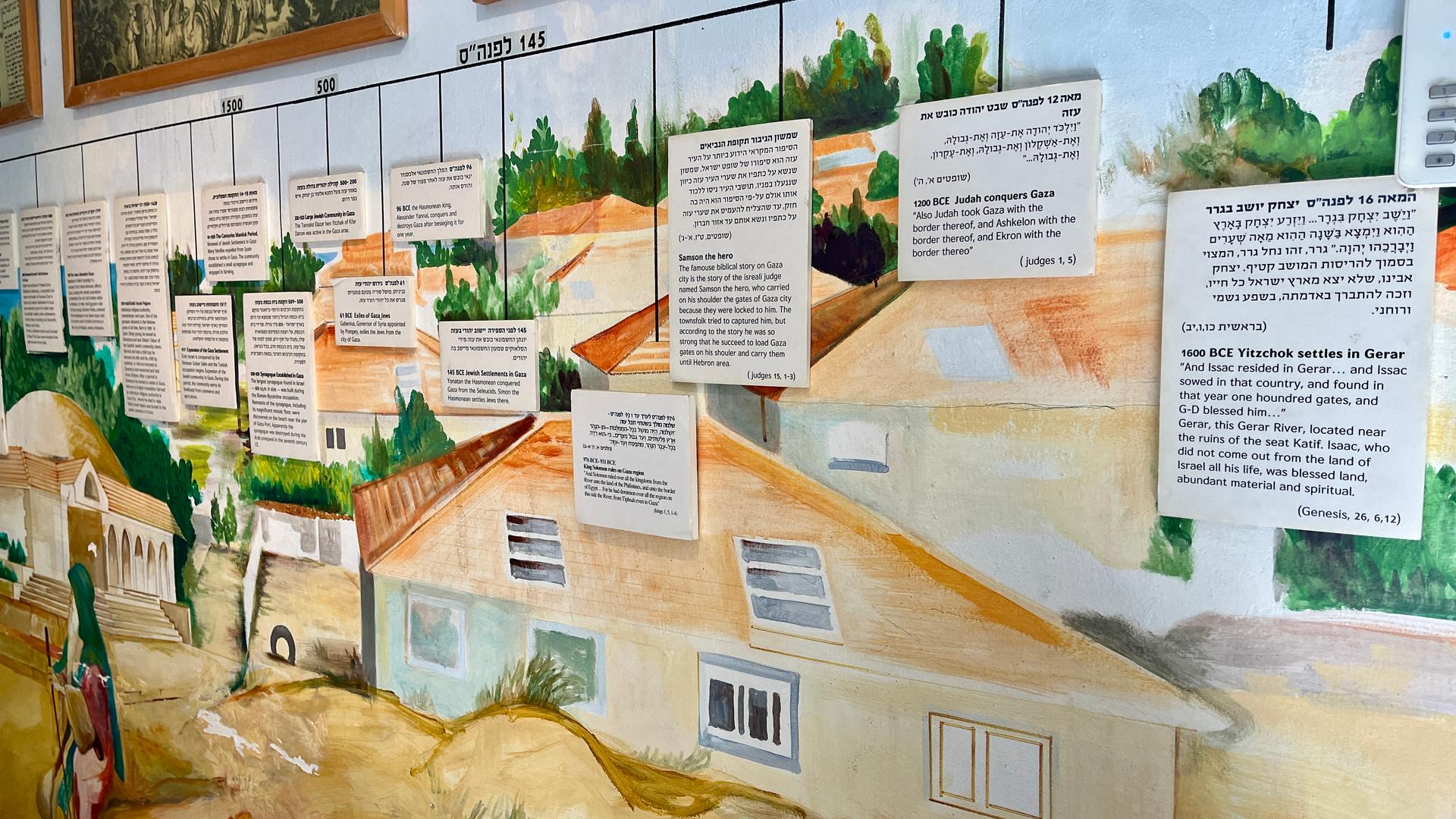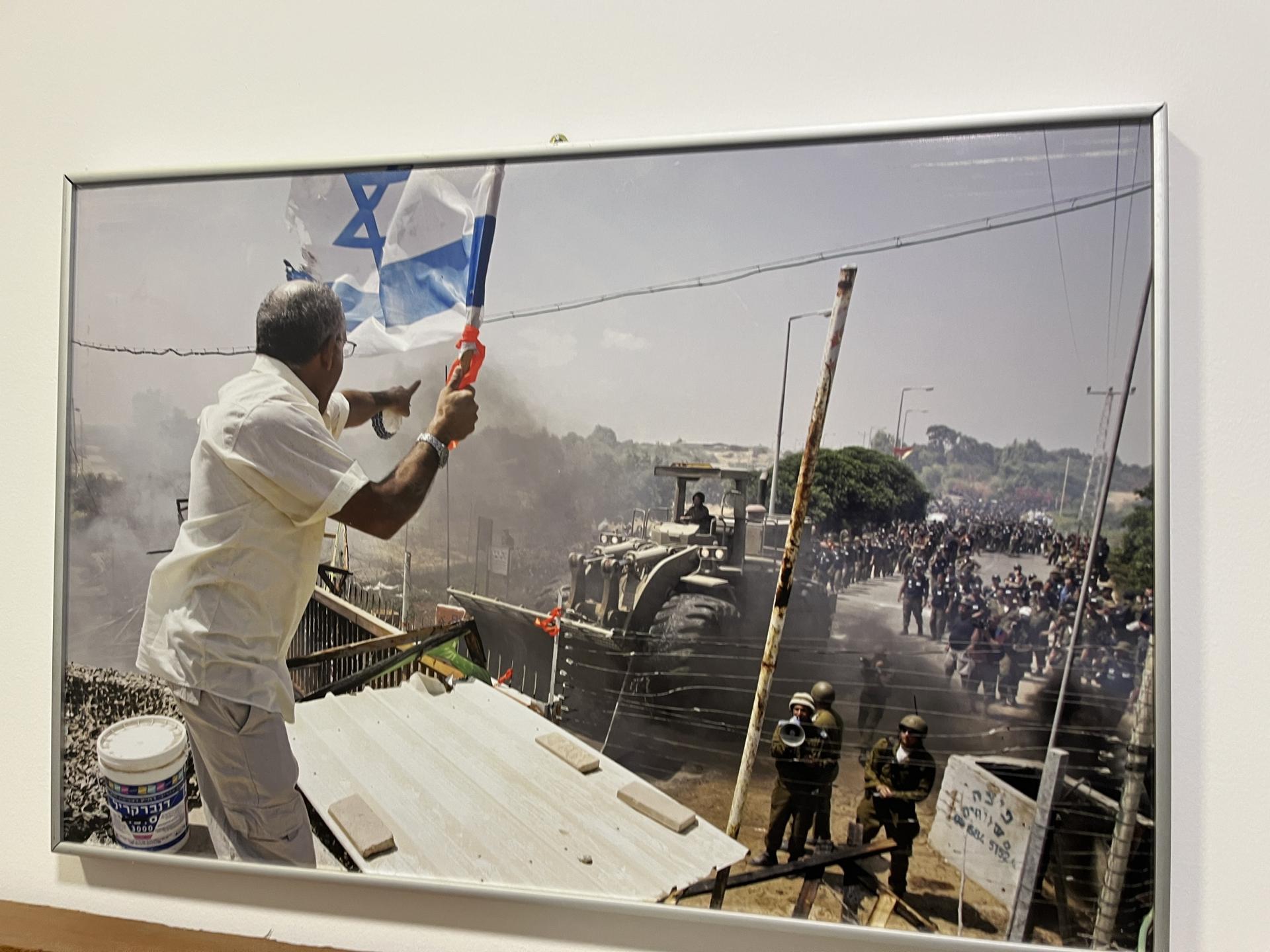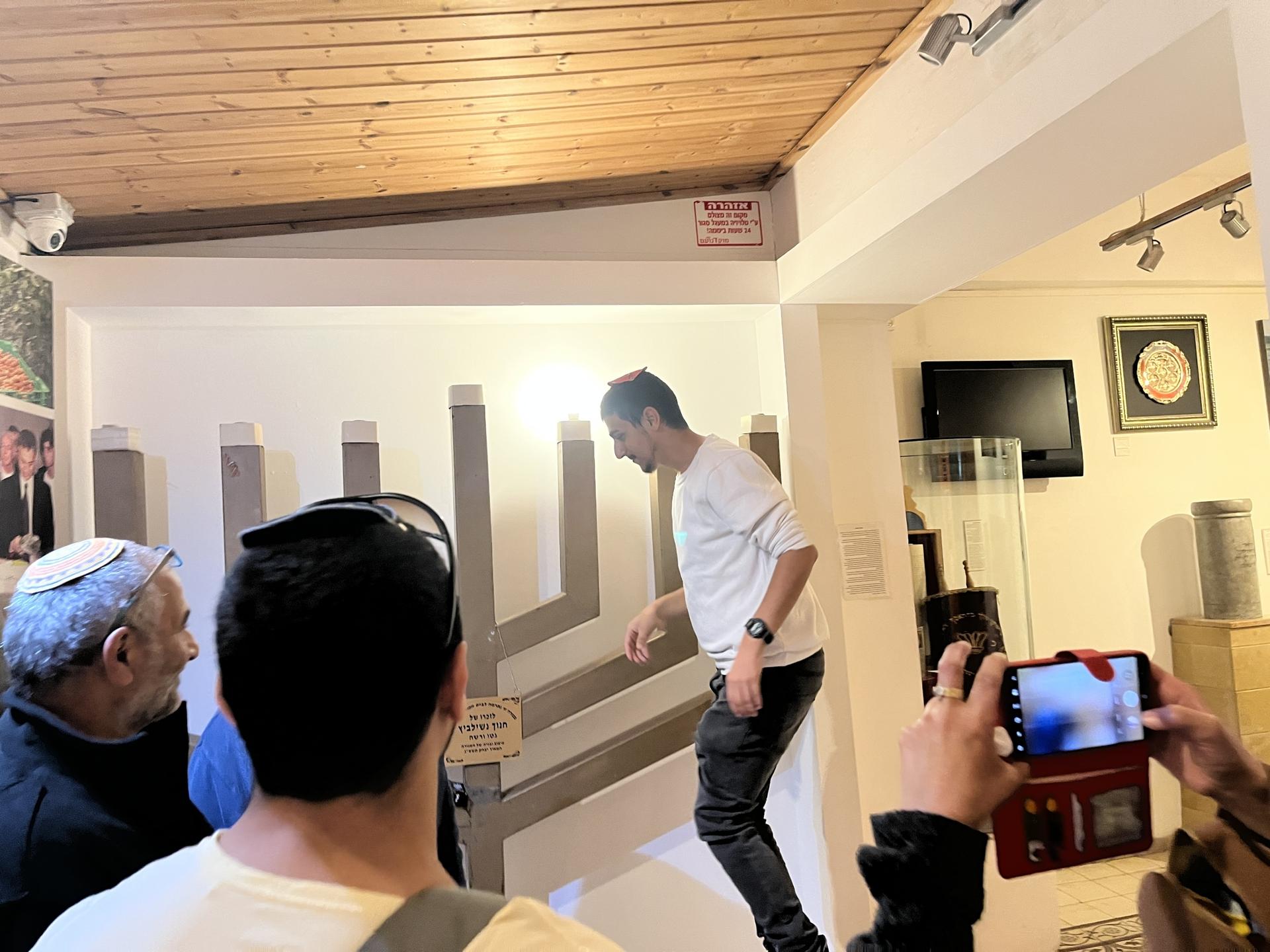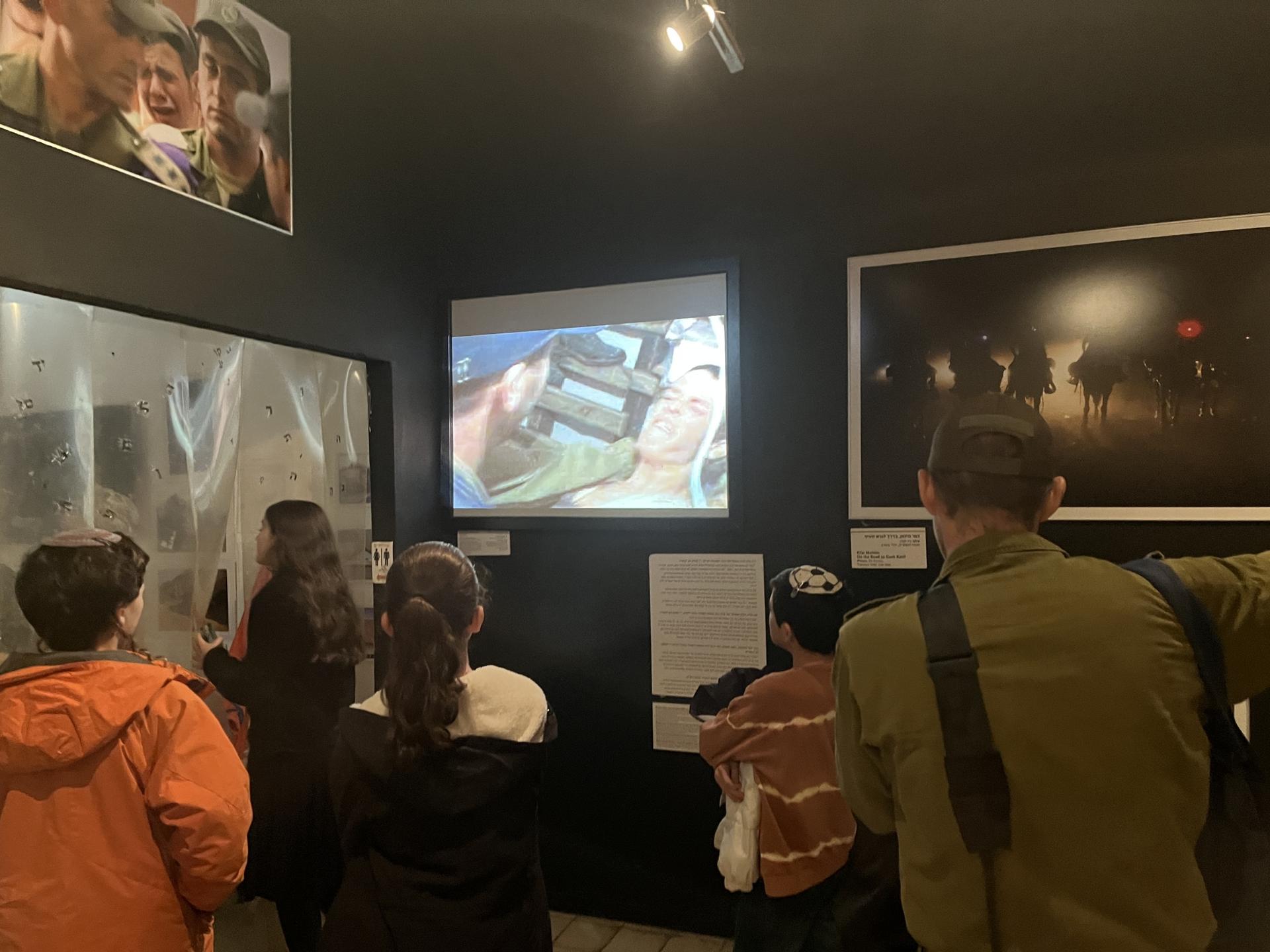BEACHFRONT PROPERTY CALL GAZA 666
Amid war and large-scale displacement in Gaza, Israeli settlers plan their returnMore than 80% of Palestinians in Gaza have been displaced. The fear they may never be allowed back to their homes is bolstered by a growing movement in Israel to resettle in the Gaza Strip.
The World
December 26, 2023 ·
December 26, 2023 ·
By Rebecca Collard

An ad from an Israeli real estate company, advertising a sea-front home in Gaza, transposed on the rubble of Palestinian homes, posted on Dec. 13, 2023. The post and the Instagram account have since been deleted after receiving elevated criticism on social media.
Screenshot from Instagram

An ad from an Israeli real estate company, advertising a sea-front home in Gaza, transposed on the rubble of Palestinian homes, posted on Dec. 13, 2023. The post and the Instagram account have since been deleted after receiving elevated criticism on social media.
Screenshot from Instagram
This month, as the Israeli Air Force continued to bombard the Gaza Strip, an Israeli real estate company posted images of Israeli settlements transposed on top of the rubble of Palestinian homes in Gaza.
“Wake up, a beach house is not a dream,” reads the ad, which includes a map of the future Israeli settlements in Gaza. “Now at pre-sale pieces.”
The company advertising beach-front homes for Israelis in the Gaza Strip also has settlements in the West Bank. And, while there has been no Israeli government approval of any new settlements in Gaza, the ad is part of a growing movement among Israeli settlers to return to Gaza, heightening fears that Palestinians displaced by the fighting may not be allowed to return to their homes.
Israeli Knesset member Limor Son Har Melech posted a video of herself in a boat with other settlers off the coast of Gaza earlier this month, as the war raged inside.
“First of all, it’s all very exciting,” said Son Har Melecha, a member of Israel’s far-right Jewish Power party. She goes on to call the return of Israeli settlements to Gaza a true picture of victory.
“Settlement in every part of the Gaza Strip … A large, extensive settlement without fear, without hesitation, without humiliation. This land is the land that the creator of the world gave to us.”
Returning Jewish settlements to Gaza is much more than messianic rhetoric.
“Wake up, a beach house is not a dream,” reads the ad, which includes a map of the future Israeli settlements in Gaza. “Now at pre-sale pieces.”
The company advertising beach-front homes for Israelis in the Gaza Strip also has settlements in the West Bank. And, while there has been no Israeli government approval of any new settlements in Gaza, the ad is part of a growing movement among Israeli settlers to return to Gaza, heightening fears that Palestinians displaced by the fighting may not be allowed to return to their homes.
Israeli Knesset member Limor Son Har Melech posted a video of herself in a boat with other settlers off the coast of Gaza earlier this month, as the war raged inside.
“First of all, it’s all very exciting,” said Son Har Melecha, a member of Israel’s far-right Jewish Power party. She goes on to call the return of Israeli settlements to Gaza a true picture of victory.
“Settlement in every part of the Gaza Strip … A large, extensive settlement without fear, without hesitation, without humiliation. This land is the land that the creator of the world gave to us.”
Returning Jewish settlements to Gaza is much more than messianic rhetoric.

A timeline line of Jewish presence in Gaza on the wall of the Gush Katif Museum
The boat trip wrapped up a day-long conference that included plans and logistics for building Israeli settlements in Gaza. In a WhatsApp group for would-be settlers, there is an online registration form asking applicants about their family size and current residence.
A leaked Israeli government document from October proposed relocating Gaza’s population to Egypt, and it’s something that has been alluded to by Israeli politicians.
“Oct. 7 definitely provided a lot more emboldening and legitimacy for those on the right who have been talking about expanding settlements,” said Mairav Zonszein, who is with the International Crisis Group. “Basically, one Jewish supremacist state between the river and the sea.”
Israel occupied Gaza and the West Bank in the 1967 war, and soon after, Israelis began settling there, even though it’s illegal under international law to establish settlements in an occupied territory. By 2005, when Israel withdrew from Gaza in what it called its unilateral disengagement, there were around 9,000 Israeli settlers in more than 20 settlements in Gaza. The numbers were much smaller than those in the West Bank, but as the Second Intifada raged, it took more soldiers and resources to protect those settlers.
The Gush Katif Museum in Jerusalem is named after the biggest of those settlement blocks. Gush Katif, which translates to the ‘Harvest Bloc,’ was built in the southwest of the Strip between, Rafah and Khan Yunis.
Here, the emboldening Zonszein talks about can be seen in piles of bright orange shirts stacked on tables and chairs, reading: “Going home. Going back to Gush Katif.”
A leaked Israeli government document from October proposed relocating Gaza’s population to Egypt, and it’s something that has been alluded to by Israeli politicians.
“Oct. 7 definitely provided a lot more emboldening and legitimacy for those on the right who have been talking about expanding settlements,” said Mairav Zonszein, who is with the International Crisis Group. “Basically, one Jewish supremacist state between the river and the sea.”
Israel occupied Gaza and the West Bank in the 1967 war, and soon after, Israelis began settling there, even though it’s illegal under international law to establish settlements in an occupied territory. By 2005, when Israel withdrew from Gaza in what it called its unilateral disengagement, there were around 9,000 Israeli settlers in more than 20 settlements in Gaza. The numbers were much smaller than those in the West Bank, but as the Second Intifada raged, it took more soldiers and resources to protect those settlers.
The Gush Katif Museum in Jerusalem is named after the biggest of those settlement blocks. Gush Katif, which translates to the ‘Harvest Bloc,’ was built in the southwest of the Strip between, Rafah and Khan Yunis.
Here, the emboldening Zonszein talks about can be seen in piles of bright orange shirts stacked on tables and chairs, reading: “Going home. Going back to Gush Katif.”

A pile of ‘Return to Gush Katif’ T-shirts for sale at the Gush Katif Museum.
Credit: Rebecca Collard/The World
The movement to return Israeli settlements in Gaza is not new.
Since Israel’s 2005 disengagement, settlers have kept the flame of reoccupation and resettlement alive, but motivation, planning and general Israeli support for that have risen sharply. Avner Franklin, a guide and group co-ordinator at the Gush Katif Museums, said they are selling a hundred times more shirts than before.
Until recently, returning Israeli settlements to Gaza seemed like a pipe dream of Israel’s religious right movement, but according to a poll by Israel’s Channel 12 last month, more Israelis supported the re-occupation and return of settlements in Gaza than opposed it.

Photos in the Gush Katif Museum show Israel’s 2005 withdrawal from Gaza.
Credit: Rebecca Collard/The World
Mani is visiting the museum to buy return-to-Gush-Katif shirts for her six children. She’s originally from Washington, DC. She did not want to give her last name because she said she is related to people who are in the US government. She said Hamas’ attack on Oct. 7, which left around 1,200 Israelis dead and hundreds more as hostages in Gaza, is proof Israel needs those settlements to keep Israelis safe.
“Sending Jews back into Gaza to live there will strategically help us both as a state and as a Jewish people to secure our future in Israel for hundreds and thousands of years to come,” she said. Americans need to understand that Israel is fighting the war in Gaza not just on behalf of Israel but the US and the entire world, Mani added.
“This is a war against evil,” she said.
But the US has said they do not want to see Israel reoccupy Gaza in any long-term way, and in recent days — as the death toll in Gaza has soared to over 20,000 — has urged Israel to use more resistance and avoid civilian deaths. But so far, Washington has not stopped arms transfers to Israel or been willing to use any of its other real levers to rein in the Israeli military offensive.
“Sending Jews back into Gaza to live there will strategically help us both as a state and as a Jewish people to secure our future in Israel for hundreds and thousands of years to come,” she said. Americans need to understand that Israel is fighting the war in Gaza not just on behalf of Israel but the US and the entire world, Mani added.
“This is a war against evil,” she said.
But the US has said they do not want to see Israel reoccupy Gaza in any long-term way, and in recent days — as the death toll in Gaza has soared to over 20,000 — has urged Israel to use more resistance and avoid civilian deaths. But so far, Washington has not stopped arms transfers to Israel or been willing to use any of its other real levers to rein in the Israeli military offensive.

A six-foot tall menorah in the Gush Katif Museum. In December, Israeli soldiers brought it to Gaza and lit it for Hanukkah.
Credit: Rebecca Collard/The World
“Settlements do not bring security. Settlements are one of the main obstacles in this conflict to any kind of resolution,” said Zonszein.
One room of the museum is dedicated to Israel’s 2005 withdrawal from Gaza, with videos on a loop of Israeli soldiers forcibly removing Jewish settlers. Then Israeli Prime Minister Ariel Sharon, who had pushed for Israel to build settlements in occupied territories after the 1967 war, was also the one who pushed for the Gaza disengagement. His finance minister at the time, current Israeli Prime Minister Benjamin Netanyahu, voted in favor of the plan at first but then resigned in protest, laying the groundwork for his return to the prime minister's office five years later.

A room in the Gush Katif Museum showing images of Israel’s 2005 withdrawal from Gaza.
Credit: Rebecca Collard/The World
Zonszein said that for now, it is not Israeli government policy to resettle in Gaza, but she said, as the war goes on, if Israel develops a military presence in northern Gaza, settlers could make attempts to set up settlements.
“I don't see that happening right now…,” Zonszein said, “But it could happen in a more kind of tacit way. I wouldn't rule it out. Let's put it that way.”
Related: Stateless Palestinians in Jordan struggle to make a future
No comments:
Post a Comment